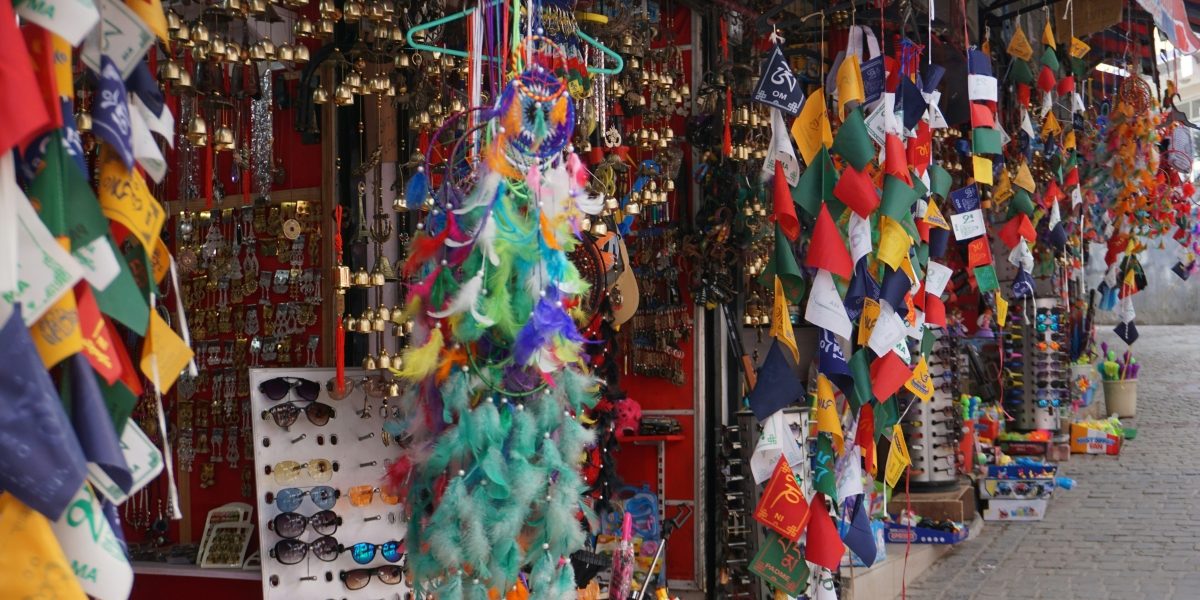They move, they shimmer, they capture attention in ways that static signs may not be able to. Feather flags transform ordinary spaces into visually dynamic advertising that can catch your eye from a distance. A stationary sign might blend into the environment after you’ve seen it once. A feather flag, on the other hand, tends to continue to grab your attention every time you pass because motion is inherently noticeable. That movement advantage makes feather flags one of the more effective outdoor advertising tools available, yet many campaigns don’t fully take advantage of them.
Humans are neurologically wired to notice movement. It’s an ancient survival instinct that still plays a significant role in how our brains process visual information. A flag moving in the breeze tends to be recognized as important, even when your conscious mind is focused on something else. You might overlook a static sign, but you could notice movement in your peripheral vision without trying. That automatic attention-grabbing quality makes feather flags potentially more effective compared to their cost and effort investment.
The problem most campaigns face is underestimating how much of a difference a movement can make in capturing voter attention. Static yard signs may fade into background noise after a few exposures. Feather flags are more likely to remain visible and interesting because the motion is always slightly different, always a bit fresh. Using feather flags strategically could give you a competitive advantage.
The Movement Advantage
Motion catches eyes instinctively because human vision is calibrated to detect movement as potentially important. A stationary sign is environmental. A moving flag is an event happening in real-time. Even when you’re not looking directly at it, peripheral motion could register as worthy of attention. That neurological response means feather flags may reach people who’ve become less responsive to static signage. Voters who might not notice another yard sign are more likely to notice a feather flag moving in the breeze.
The movement advantage tends to compound across multiple exposures. Someone driving past the same intersection repeatedly may stop noticing a static sign. They’ve processed it, categorized it, and filed it away. That same person might continue noticing a feather flag because the motion is always slightly different. Wind speed varies, angle changes, the flag sometimes moves more vigorously, and sometimes moves gently. That variability means the visual input isn’t exactly repetitive, even though it’s fundamentally the same flag in the same location.
This attention-sustaining quality of movement makes feather flags particularly helpful during low-attention campaign periods when people aren’t actively thinking about elections. A static sign during early campaign stages might reach a few people because attention is low. A feather flag has a better chance of reaching more people during the same period because it cuts through low attention with motion. That efficiency advantage can be particularly valuable early in campaigns when maximizing awareness with limited voter attention is crucial.
Design That Pops in the Breeze
Vertical color flow means arranging colors from top to bottom so the movement emphasizes the color transitions. Stripes oriented vertically may create a stronger visual movement effect than horizontal stripes because vertical motion tends to amplify perceived motion. Colors should contrast strongly so motion creates noticeable visual shifts. A flag with subtle color variation may not be as effective as one with dramatic color contrast that moves visibly with the wind. The way colors flow vertically through the flag is a key factor in determining how visually impactful motion actually is.
Brand contrast matters because your candidate or organization needs to stand out against the background environment. Feather flags visible against the sky may read differently from feather flags visible against trees or buildings. Choose colors that contrast with the typical environment where your flag will fly. This might mean high-contrast combinations that look bold and slightly unconventional in static contexts but could read clearly from a distance and in motion. Test how flags look from typical viewing distances to understand what works in real-world scenarios rather than assuming what works in person translates to visibility from moving vehicles.
Typography on feather flags should be large and bold because readable text at a distance in a moving flag is harder than readable text on a static sign. Large letters, high contrast between text and background, and generous spacing help ensure your message stays legible even when the flag is moving. Avoid intricate designs or small text that might read clearly on static signs but could become a blur on a moving flag. The motion that makes feather flags attention-grabbing also makes fine details impossible to read, so design for legibility first and aesthetics second.
Placement Tips for Maximum Visibility
Wind direction determines flag visibility because flags only move when the wind hits them. A flag placed in a location where wind is blocked by buildings or trees might not move effectively. Position flags where prevailing wind patterns hit them directly. That usually means open areas, high-traffic corridors, and locations not sheltered by structures. Understanding local wind patterns for your campaign season is key to placing flags where they’ll actually move and grab attention rather than hanging limp and ineffective.
Entryways to high-traffic locations are prime real estate for feather flags. Parking lot entrances, shopping center entries, transit stations, and community gathering points concentrate foot and vehicle traffic exactly where flags will be visible. Flags at entry points grab attention as people arrive rather than as they’re leaving, creating awareness during arrival moments when attention is slightly elevated. High-traffic retail areas work particularly well because the flag’s motion is likely to continue to grab attention throughout the shopping visit, creating repeated exposure.
Height and visibility sightlines matter because flags need to be visible from typical viewing distances. Too low, and vehicles might not see them. Too high and they might not move as effectively, or could disappear into the sky in certain lighting. Position flags where they’re visible from typical traffic flow heights and distances. Test from the perspective of someone actually driving or walking through the area rather than standing directly in front of the flag. Adjust height and positioning based on what appears to work for visibility from real viewing distances.
Durability Meets Style
Lightweight poles mean flags can survive wind without becoming unstable or dangerous. Heavy poles could add expense without improving functionality. Feather flags need to be anchored securely but constructed from materials that won’t be damaged easily or become hazardous in high winds. Most quality feather flag kits include engineered poles that balance stability with lightweight design, making them practical for campaign deployment and storage.
Weatherproof fabrics help ensure flags maintain appearance and legibility throughout campaign seasons. UV-resistant materials reduce the risk of fading that would otherwise happen quickly in outdoor sun exposure. Water-resistant fabrics withstand rain and moisture without degrading or developing mold. Quality flags maintain visual impact across weather variations that would damage inferior materials. The extra cost of weatherproof construction can be worth it through extended flag lifespan and maintained visibility throughout campaigns.
Reusable construction means flags from one campaign can be redeployed for future campaigns with updated messaging. Simple design modifications can help adapt flags for different purposes or different political cycles. That reusability makes the per-campaign cost much lower than treating flags as single-use campaign materials. Buy quality once and use it repeatedly rather than treating flags as single-use campaign materials.
Summary
Great feather flags don’t just advertise, they perform. The constant motion can create an attention-grabbing impact that static signs can’t match. Motion is effective when words alone might not catch attention because human brains are hardwired to notice movement. That neurological reality makes feather flags one of the most efficient attention-capturing tools available, yet most campaigns still overlook them.
Strategic placement of feather flags in high-traffic locations where wind will actually move them can lead to sustained visibility that reaches voters multiple times daily. Combined with bold design and high-contrast colors that pop visually, feather flags deliver awareness out of proportion to their cost. They fill gaps that static signage often leaves behind in the attention-grabbing landscape.
Deploy feather flags where movement is possible, where traffic is heavy, and where visibility matters most. The motion does much of the work for you, continuously grabbing attention that static signs might have lost weeks ago. That’s the advantage of understanding how human visual systems actually work and using that knowledge to deploy advertising that works with your target audience’s neurology rather than against it.

















